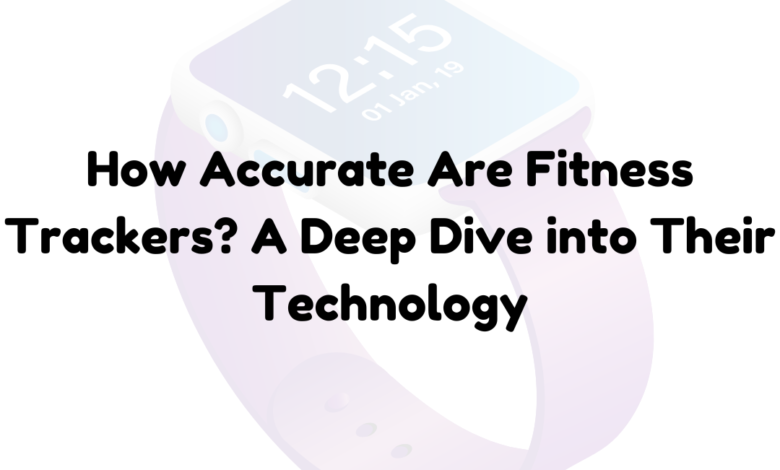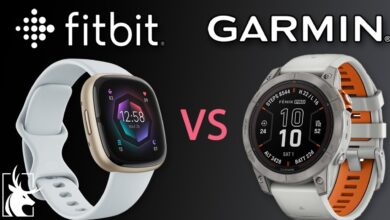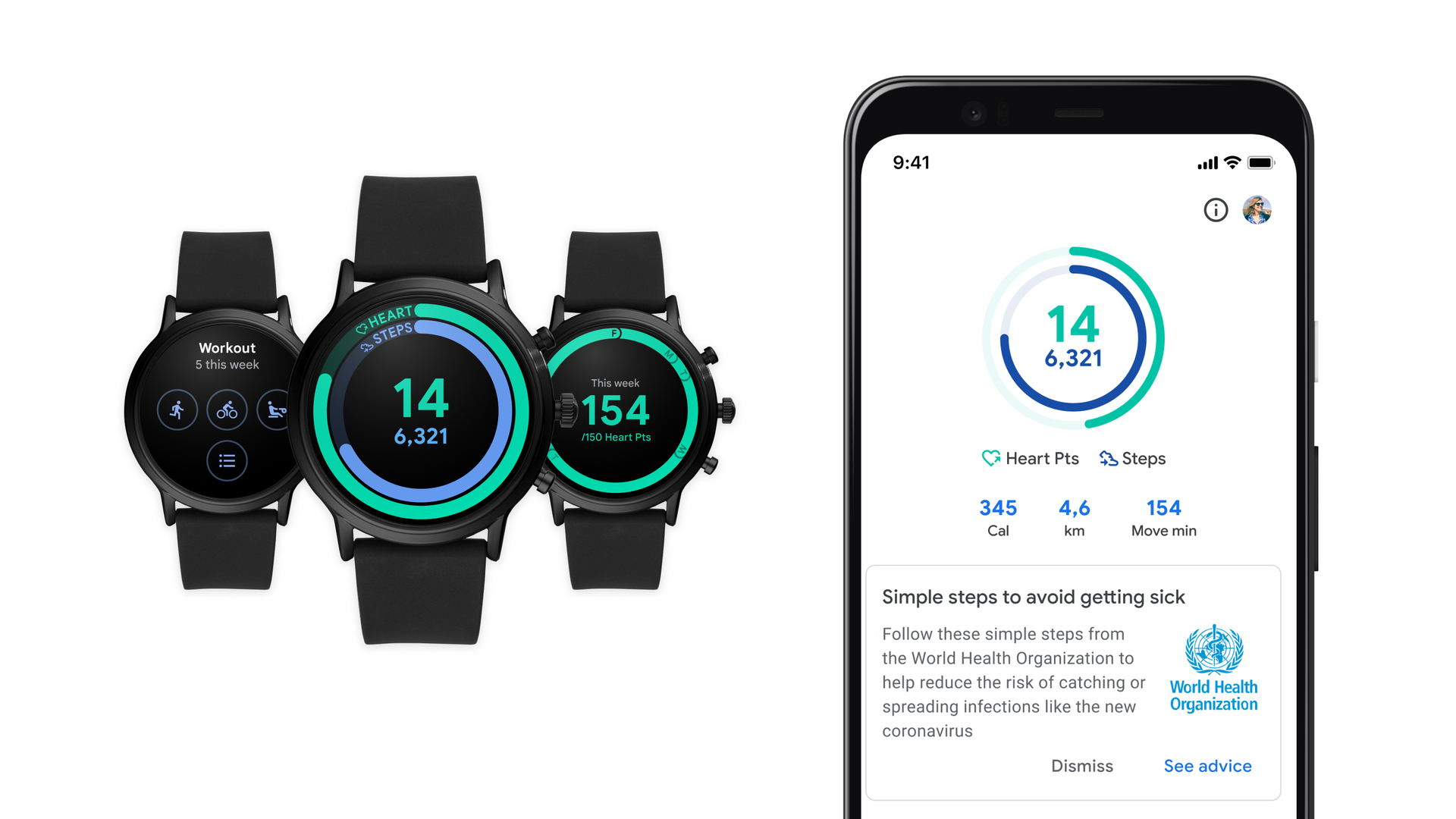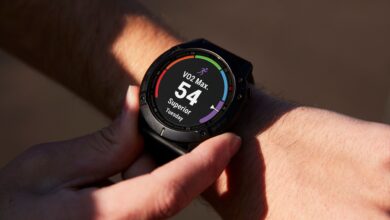
How Accurate Are Fitness Trackers? A Deep Dive into Their Technology
How Accurate Are Fitness Trackers?
In recent years, fitness trackers have become ubiquitous accessories for health-conscious individuals. These wearable devices promise to monitor our physical activity, sleep patterns, and even stress levels. But how accurate are they? This article delves into the technology behind fitness trackers, exploring their capabilities, limitations, and overall accuracy. We’ll also examine the impact of these devices on public health, their role in medical research, and the ethical considerations surrounding their use.
The Rise of Fitness Trackers
Fitness trackers have experienced a meteoric rise in popularity over the past decade. From simple pedometers to sophisticated smartwatches, these devices have evolved to offer a wide range of features. They now track steps, monitor heart rate, analyze sleep patterns, estimate calorie burn, provide GPS tracking, and even assess stress levels.
The global wearable technology market, which includes fitness trackers, was valued at $32.63 billion in 2019 and is projected to reach $74.03 billion by 2026. This rapid growth reflects the increasing consumer interest in personal health monitoring and the broader trend of quantifying various aspects of our daily lives.
As the market for these devices continues to grow, it’s crucial to understand their accuracy and reliability. After all, many users rely on this data to make important decisions about their health and fitness routines. Moreover, healthcare providers are increasingly incorporating data from these devices into their patient assessments, making the accuracy of fitness trackers a matter of medical significance.
Understanding the technology
To assess the accuracy of fitness trackers, we first need to understand the technology that powers them. Most modern fitness trackers employ a combination of sensors and algorithms to collect and interpret data about your physical activity.
Key Components
The key components typically include:
- Accelerometer: This sensor measures acceleration forces, allowing the device to detect movement and orientation. It’s the primary sensor used for step counting and activity recognition.
- Gyroscope: This sensor detects rotational movement, complementing the accelerometer to provide more accurate motion sensing, especially for activities involving complex movements.
- Optical heart rate sensor: This uses LED lights to measure blood flow through the wrist, enabling continuous heart rate monitoring without the need for a chest strap.
- GPS: For outdoor activities, GPS tracking provides accurate data on distance, pace, and route.
- Altimeter: This sensor measures changes in altitude, useful for tracking stairs climbed or elevation gain during hikes.
- Thermometer: Some advanced devices include temperature sensors to measure skin temperature or ambient temperature.
- Electrodermal activity (EDA) sensor: Found in newer devices, this sensor measures small electrical changes in skin conductance, which can be indicative of stress levels.
These components work together to provide a comprehensive picture of your daily activity. However, the accuracy of each component can vary, affecting the overall reliability of the device.
From Raw Data to Actionable Insights
The interplay between hardware and software is crucial in fitness trackers. Sophisticated algorithms interpret the raw data from these sensors to provide meaningful insights. For example, step counting isn’t just a matter of detecting movement; the algorithm must distinguish between walking, running, and other activities that might cause similar sensor readings.
Similarly, sleep tracking algorithms analyze a combination of movement data, heart rate patterns, and sometimes even breathing rates to estimate sleep stages. These algorithms are continually refined based on lab studies and real-world data, aiming to improve accuracy over time.
Accuracy of Key Metrics
Let’s examine the accuracy of some of the most common metrics tracked by fitness devices:
Step Counting
Step counting is perhaps the most basic function of fitness trackers, but it’s not as simple as it might seem. The accuracy of step counting can be affected by various factors such as walking style and pace, arm movement (or lack thereof), and non-walking activities like driving on a bumpy road.
Research has shown that most fitness trackers are reasonably accurate for step counting, with an error rate typically between 2-10% for normal walking. A 2015 study published in the British Journal of Sports Medicine found that fitness trackers were accurate within 1% for counting steps during treadmill walking at 3.3 mph. However, accuracy tends to decrease during activities with irregular movements or when the device is worn on a non-dominant hand.
Interestingly, many trackers tend to undercount steps at slower walking speeds and overcount at faster speeds. This variability highlights the importance of consistent wear and usage patterns when tracking progress over time.
Heart rate monitoring
Optical heart rate sensors have revolutionized wearable technology, allowing for continuous heart rate monitoring without the need for a chest strap. These sensors use photoplethysmography (PPG), which involves shining LED light into the skin and measuring the amount of light that reflects. As blood pumps through the vessels, the reflection of light changes, allowing the device to detect heart rate.
These sensors are generally accurate during rest or low-intensity activities, but their reliability can decrease during high-intensity exercises or activities with rapid arm movements. Factors such as skin tone, tattoos, and how tightly the device is worn can also affect accuracy.
A 2017 study published in the Journal of Personalized Medicine found that wrist-worn devices had a median error rate of 5% for heart rate during rest. However, error rates increased to 15–29% during exercise. The study noted significant variability between different devices and different types of exercise.
Despite these limitations, optical heart rate sensors provide valuable insights for most users, especially when looking at trends over time rather than relying on absolute accuracy for each measurement.
Calorie Burn Estimation
Calorie burn estimation is one of the most complex calculations performed by fitness trackers. It typically involves calculating basal metabolic rate (BMR) based on age, gender, height, and weight, and then factoring in activity data from sensors and heart rate information.
Due to the complexity of human metabolism and the limitations of wearable sensors, calorie burn estimations can be off by 10–30% or more. A 2017 study in the Journal of Personalized Medicine found that even the most accurate device in their test had an error rate of 27% for energy expenditure estimates.
Factors such as individual metabolic differences, non-exercise activity thermogenesis (NEAT), and the inability to account for all types of movement contribute to this inaccuracy. For example, most trackers struggle to accurately estimate calorie burn for activities like weightlifting or yoga.
Users should view calorie burn estimates as rough approximations rather than precise measurements and not rely on them exclusively for dietary decisions. It’s often more useful to look at trends in calorie burn estimates over time rather than focusing on the absolute numbers.
Sleep Tracking
Sleep tracking has become a popular feature in many fitness trackers. These devices typically use a combination of movement data and heart rate information to estimate sleep stages and duration. While fitness trackers are generally accurate for total sleep time, they are less reliable for detecting specific sleep stages (light, deep, and REM).
A 2019 study published in Nature and Science of Sleep found that wearable trackers tended to overestimate total sleep time and sleep efficiency compared to polysomnography, the gold standard for sleep measurement. The study also noted that these devices had difficulty accurately identifying wake periods during sleep.
Despite these limitations, sleep tracking can provide valuable insights into sleep patterns and habits. Many users find that the data helps them identify factors affecting their sleep quality and motivates them to improve their sleep hygiene.
Comparative Accuracy Table
To give you a clearer picture of the accuracy of different metrics, here’s a comparison table:
| Metric | Typical Accuracy Range | Factors Affecting Accuracy |
|---|---|---|
| Step Counting | 90-98% | Walking style, arm movement, and non-walking activities |
| Heart rate monitoring | 90–95% at rest, 70–85% during exercise | Exercise intensity, skin tone, and device fit |
| Calorie Burn Estimation | 70-90% | Individual metabolism, types of activities |
| Sleep Tracking | 80–90% for total sleep time; 60–80% for sleep stages | Individual sleep patterns, device sensitivity |
It’s important to note that these accuracy ranges can vary depending on the specific device, user, and conditions of use.
Improving Accuracy
While fitness trackers may not be 100% accurate, there are several ways to improve their performance and get more reliable data:
- Wear it correctly. Ensure the device fits snugly on your wrist, especially during exercise. For heart rate monitoring, wear the device about a finger’s width above your wrist bone.
- Keep it updated. Regularly update your device’s firmware and app to benefit from improvements and bug fixes. Many companies continually refine their algorithms based on new data and research.
- Calibrate when possible: Some devices allow you to calibrate stride length or other metrics for better accuracy. Take advantage of these features when they are available.
- Use GPS for outdoor activities: When available, GPS tracking can provide more accurate distance and pace measurements than estimates based on arm movement alone.
- Input accurate personal data: Make sure your age, height, weight, and other personal information are up-to-date in the app. This data is crucial for accurate calorie burn and other calculations.
- Be consistent: Try to wear your tracker in the same position and on the same wrist each day. This consistency can help improve accuracy over time as the device learns your patterns.
- Understand your device: Read the user manual and understand what activities your device is best suited for. Some trackers, for example, are better at recognizing swimming movements than others.
The Role of Algorithms and Machine Learning
As important as the hardware components are, the software that interprets the raw data plays a crucial role in the accuracy of fitness trackers. Many companies are investing heavily in algorithms and machine learning to improve the accuracy of their devices.
Advanced pattern recognition algorithms can learn to recognize different types of activities based on sensor data, improving the device’s ability to accurately categorize various exercises. For example, some trackers can now automatically detect when you’ve started a run or a bike ride, or even recognize specific exercises in a strength training workout.
Machine learning models can adapt to individual users’ patterns over time, potentially improving accuracy through personalization. For instance, the device might learn to recognize your unique gait pattern, leading to more accurate step counting.
Data fusion techniques, which combine information from multiple sensors, can provide a more accurate picture of activity and physiological state. For example, combining heart rate data with movement data can lead to more accurate calorie burn estimates.
Some companies are also exploring the use of artificial intelligence to provide more personalized health insights. For example, AI algorithms might analyze your activity patterns, sleep data, and heart rate variability to predict stress levels or recommend optimal times for exercise.
These software advancements have the potential to significantly improve the accuracy of fitness trackers in the future, even without major hardware changes. As these algorithms become more sophisticated, we can expect to see continual improvements in the accuracy and insights provided by fitness trackers.
Limitations and Considerations
While fitness trackers can be valuable tools for monitoring health and activity, it’s important to understand their limitations:
- Not medical devices: Most consumer fitness trackers are not approved for medical use and should not be relied upon for medical diagnosis or treatment. They are wellness devices, not substitutes for professional medical care.
- Variability between devices: Accuracy can vary significantly between different brands and models. A 2019 study in the British Journal of Sports Medicine found substantial differences in step count accuracy between different wearable devices.
- Individual differences: What works well for one person may be less accurate for another due to physiological differences. Factors like skin tone, body composition, and even the hairiness of the wrist can affect sensor readings.
- Activity-specific accuracy: Many trackers are more accurate for some activities (e.g., walking, running) than others (e.g., cycling, weightlifting). Users should be aware of their device’s strengths and limitations.
- Environmental factors: Extreme temperatures, high humidity, or even tight sleeves can affect the accuracy of some sensors, particularly optical heart rate monitors.
- Battery life considerations: Some devices may sacrifice accuracy to preserve battery life, for example, by reducing the frequency of heart rate measurements.
- Privacy concerns: As fitness trackers collect more detailed health data, there are growing concerns about data privacy and security. Users should be aware of how their data is being used and shared.
The Impact of Inaccuracies
Given that fitness trackers aren’t 100% accurate, it’s worth considering the potential impact of these inaccuracies:
Positive Aspects:
- Motivation and awareness: Even with some inaccuracy, trackers can provide motivation and increase awareness of physical activity. The act of monitoring itself often leads to positive behavior changes.
- Trend tracking: Consistent inaccuracies (e.g., always undercounting steps by 5%) still allow users to track relative progress over time. It’s often the trends, rather than the absolute numbers, that are most valuable.
- Health discussions: The data can serve as a useful starting point for discussions with healthcare providers, potentially leading to earlier interventions for health issues.
- Research opportunities: Large-scale data from fitness trackers, even if not perfectly accurate, can provide valuable insights for public health research.
Negative Aspects:
- Misguided decisions: Overestimation of calorie burn could lead to overeating and impede weight loss efforts. Conversely, underestimation might lead to excessive calorie restriction.
- Unnecessary anxiety: Inaccurate sleep data might cause unnecessary concern about sleep quality, potentially leading to sleep anxiety.
- Training errors: Over-reliance on potentially inaccurate data could lead to overtraining or undertraining in athletes, potentially increasing injury risk.
- False sense of security: Users might mistakenly believe they’re meeting health guidelines based on inaccurate data, leading to complacency.
- Obsessive behavior: For some individuals, constant tracking can lead to an unhealthy obsession with numbers, potentially exacerbating conditions like eating disorders or exercise addiction.
The Role of Fitness Trackers in Medical Research and Healthcare
Despite their limitations, fitness trackers are increasingly being used in medical research and healthcare settings.
- Large-scale studies: Researchers are using data from fitness trackers to conduct large-scale studies on physical activity, sleep patterns, and their relationship to various health outcomes. For example, the All of Us Research Program, run by the National Institutes of Health, includes fitness tracker data in its comprehensive health database.
- Remote patient monitoring: Some healthcare providers are using fitness tracker data to monitor patients with chronic conditions remotely. For instance, tracking activity levels and heart rate patterns can help manage conditions like heart disease or diabetes.
- Clinical trials: Fitness trackers are being used in clinical trials to objectively measure outcomes like physical activity levels or sleep quality, providing more continuous data than traditional methods.
- Preventive healthcare: The continuous monitoring provided by fitness trackers could help in the early detection of health issues. For example, changes in resting heart rate or sleep patterns might indicate the development of health problems.
- Personalized medicine: As the accuracy and capabilities of these devices improve, they could play a significant role in personalizing treatment plans based on individual activity patterns and physiological responses.
While these applications are promising, it’s crucial to remember the limitations of consumer-grade devices. Medical decisions should always be based on validated clinical tools and professional judgment, with fitness tracker data serving as supplementary information.
Ethical Considerations
The widespread use of fitness trackers raises several ethical considerations:
- Data privacy: Fitness trackers collect sensitive health data. There are concerns about how this data is stored, used, and potentially shared with third parties.
- Informed consent: Users may not fully understand what data is being collected and how it might be used, raising questions about informed consent.
- Equity and access: As fitness trackers become more integrated into healthcare, there are concerns about creating or exacerbating health disparities based on who can afford or effectively use these devices.
- Overreliance on technology: There’s a risk of over-medicalizing daily life and creating unnecessary anxiety about health metrics.
- Workplace use: Some employers are incorporating fitness trackers into wellness programs, raising concerns about privacy and potential discrimination.
- Child use: The use of fitness trackers by children raises questions about body image, privacy, and the potential for unhealthy obsessions with health metrics.
Addressing these ethical concerns will be crucial as fitness trackers become more prevalent and influential in healthcare and daily life.
The Future of Fitness Tracker Accuracy
As technology continues to advance, we can expect improvements in the accuracy of fitness trackers.
- New sensor technologies: emerging sensors, such as continuous glucose monitors or sweat analysis sensors, could provide more comprehensive health data.
- Improved algorithms: Continued refinement of data interpretation through machine learning and AI will likely lead to more accurate and personalized insights.
- Integration with other devices: Combining data from multiple sources (e.g., smart scales, and blood pressure monitors) could provide a more comprehensive health picture.
- Personalized calibration: More sophisticated methods for adapting to individual users’ physiology and habits could improve accuracy through personalization.
- Validation studies: As fitness trackers are increasingly used in medical research, more rigorous validation studies are likely to be conducted, leading to improvements in accuracy.
- Regulatory oversight: As these devices become more influential in healthcare, increased regulatory scrutiny may drive improvements in accuracy and reliability.
- Advanced materials: The development of more flexible and comfortable materials could improve device fit and consistent wear, potentially improving accuracy.
Conclusion
Fitness trackers have come a long way in recent years, offering increasingly sophisticated ways to monitor our health and activity. While they may not be 100% accurate, they can provide valuable insights and motivation for many users. When using a fitness tracker, it’s important to understand the limitations of the technology, use the data as a guide rather than absolute truth, and focus on trends and relative changes over time rather than precise numbers.
When using a fitness tracker, it’s important to understand the limitations of the technology, use the data as a guide rather than absolute truth, focus on trends and relative changes over time rather than precise numbers, and consult with healthcare professionals for medical concerns.
The impact of fitness trackers extends beyond individual use. These devices are reshaping our understanding of personal health, influencing medical research, and potentially transforming healthcare delivery. However, their widespread adoption also raises important ethical questions about data privacy, equity in healthcare, and the potential for technology dependence.
As we look to the future, we can expect continued improvements in the accuracy and capabilities of fitness trackers. Advances in sensor technology, machine learning algorithms, and data integration promise to provide even more comprehensive and personalized health insights. However, it will be crucial to balance these technological advancements with ethical considerations and a holistic approach to health and wellness.
Practical Tips for Fitness Tracker Users
To get the most out of your fitness tracker while maintaining a healthy perspective, consider the following tips:
- Set personalized goals: Use your tracker to set and monitor progress toward realistic, personalized health goals rather than focusing on arbitrary numbers.
- Look for trends: Pay more attention to long-term trends in your data than to day-to-day fluctuations, which may be less reliable.
- Use it as a tool, not a rule. Remember that your fitness tracker is a tool to support your health journey, not a strict arbiter of your wellness.
- Combine with other health practices: Use your tracker in conjunction with other health practices like balanced nutrition, stress management, and regular check-ups with healthcare providers.
- Be mindful of your relationship with the device. If you find yourself becoming overly anxious about your metrics, it may be time to reassess how you’re using your tracker.
- Educate yourself: Take the time to understand what your device measures, how it works, and what the data means. This knowledge can help you interpret your results more accurately.
- Share data wisely: If you choose to share your fitness data with healthcare providers or researchers, make sure you understand how your data will be used and protected.
The Bigger Picture: Fitness Trackers and Public Health
While individual use of fitness trackers is important, these devices also have potential implications for public health.
- Population-level insights: Aggregated, anonymized data from fitness trackers could provide valuable insights into population-level activity patterns, sleep trends, and more.
- Health interventions: Data from fitness trackers could inform the design and implementation of public health interventions, helping to target efforts where they’re most needed.
- Environmental health: Combining fitness tracker data with environmental data could help understand how factors like air quality or urban design affect physical activity levels.
- Pandemic response: During the COVID-19 pandemic, some researchers used fitness tracker data to study changes in activity levels and sleep patterns and even to potentially detect early signs of infection.
- Health equity: While there are concerns about fitness trackers exacerbating health disparities, they could also be used as tools to study and address these disparities if deployed thoughtfully.
As fitness trackers continue to evolve and become more prevalent, their potential impact on both individual and public health is likely to grow. However, realizing this potential will require ongoing efforts to improve accuracy, ensure data privacy and security, address ethical concerns, and integrate these technologies thoughtfully into healthcare and public health practices.
In conclusion, fitness trackers, despite their limitations, represent a significant advancement in personal health monitoring. They empower individuals with data-driven insights into their health and fitness, potentially motivating positive lifestyle changes. However, it’s crucial to approach this technology with a balanced perspective, understanding both its capabilities and limitations. As we move forward, the challenge will be to harness the potential of these devices while addressing the technical, ethical, and societal questions they raise. By doing so, we can work towards a future where technology enhances our understanding of health and supports our journey towards wellness without losing sight of the human elements of health and care.



